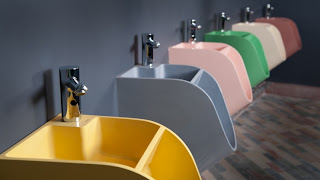City planning is the job of town planner. While social and environmental aspects are included as add on, these are not fully internalised into the process of planning and decision making. One of the reason for this externality is that planning and decision making remains dependent on techno-economic feasibility analysis. Are there any other tools being deployed to assess the socio environmental feasibility or the sustainability or the carrying capacity analysis.
One of the tool being deployed successfully, though at a nascent stage is use of ecological footprint.
As per the available data on the net, USA has a highest footprint of 8 Ha per capita against its biological carrying capacity of 3.9 Ha, thus creating a deficit of 4.1 Ha. UK has a footprint of 4.9 Ha against its biological footprint of 1.3 Ha. India has a footprint of 0.91 against biological footprint of 0.51.
The ecological footprint is being used in Wales, UK for planning development of a new area. Many cities around the world like San Francisco, Ontario, Quito, Curitiba, London have started calculating their ecological footprint.
Many new residential and industrial townships are being developed in India. Inclusion of ecological footprint into techno economic analysis will make these townships ecologically sustainable.
One of the tool being deployed successfully, though at a nascent stage is use of ecological footprint.
As per the available data on the net, USA has a highest footprint of 8 Ha per capita against its biological carrying capacity of 3.9 Ha, thus creating a deficit of 4.1 Ha. UK has a footprint of 4.9 Ha against its biological footprint of 1.3 Ha. India has a footprint of 0.91 against biological footprint of 0.51.
The ecological footprint is being used in Wales, UK for planning development of a new area. Many cities around the world like San Francisco, Ontario, Quito, Curitiba, London have started calculating their ecological footprint.
Many new residential and industrial townships are being developed in India. Inclusion of ecological footprint into techno economic analysis will make these townships ecologically sustainable.





.jpg)








